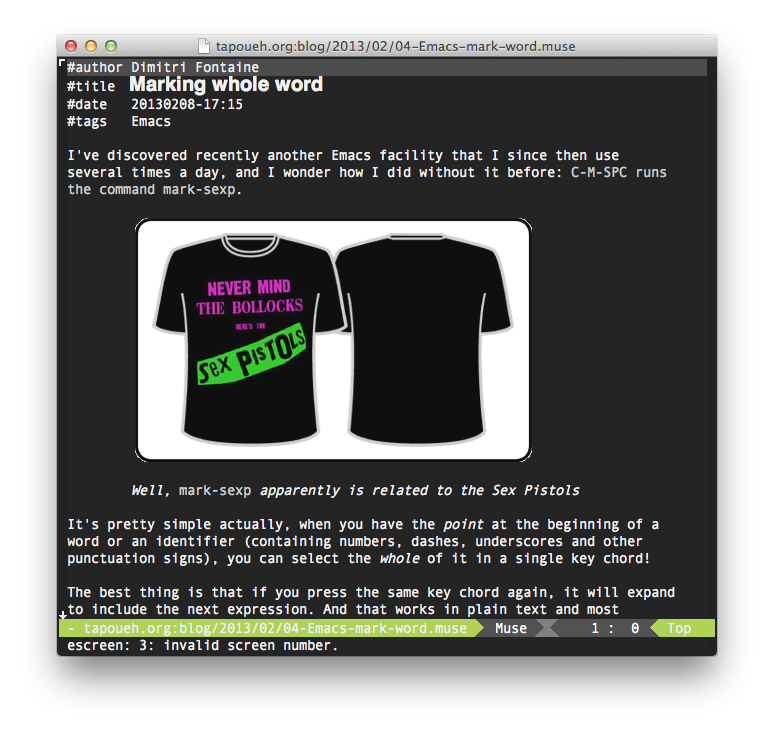
This blog of mine is written in the very good Emacs Muse format, that I find much more friendly to writing articles than both org-mode and markdown-mode that I both use in a regular basis too. The main think that I like in Muse that those two others lack is the support for displaying images inline.
*Here's what it looks like to edit with Emacs Muse* The Muse publishing system The idea is that you edit .

A breadcrumb is a navigation aid. I just added one to this website, so that it gets easier to browse from any article to its local and parents indexes and back to /dev/dim, the root webpage of this site.
As it was not that much work to implement, here’s the whole of it:
;;; ;;; Breadcrumb support ;;; (defun tapoueh-breadcrumb-to-current-page () "Return a list of (name . link) from the index root page to current one" (let* ((current (muse-current-file)) (cwd (file-name-directory current)) (project (muse-project-of-file current)) (root (muse-style-element :path (caddr project))) (path (tapoueh-path-to-root)) (dirs (split-string (file-relative-name current root) "/"))) ;; ("blog" "2011" "07" "13-back-from-char11.

Most of you are probably reading my posts directly in their RSS reader tools (mine is gnus thanks to the Gwene service), so you probably missed it, but I just pushed a whole new version of my website, still using Emacs Muse as the engine.
My setup is tentatively called tapoueh.el and browsable online. It consists of some tweaks on top of Muse, so that I can enjoy tags and proper rss support.

It’s been a week since the last commits in the el-get repository, and those were all about fixing and adding recipes, and about notifications. Nothing like core plumbing you see. Also, 0.9 was released on 2010-08-24 and felt pretty complete already, then received lots of improvements. It’s high time to cross the line and call it 1.0!
Now existing users will certainly just be moderatly happy to see the tool reach that version number, depending whether they think more about the bugs they want to see fixed (ftp is supported, only called http) and the new features they want to see in ( info documentation) or more about what el-get does for them already today…

Yes, that’s another el-get related entry. It seems to take a lot of my attention these days. After having setup the git repository so that you can update el-get from within itself (so that it’s self-contained), the next logical step is providing recipes.
By that I mean that el-get-sources entries will certainly look a lot alike between a user and another. Let’s take the el-get entry itself:
(:name el-get :type git :url "git://github.
